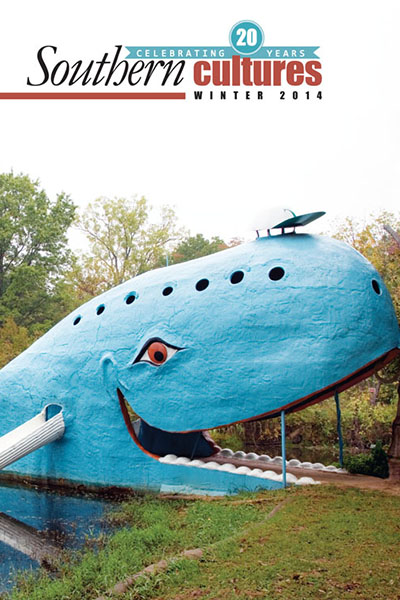Part I
Eels rolled in crushed black pepper and chopped parsley cook in the smoker. Four more culled from the twenty or more in my eel pots chill on ice awaiting the same culinary fate. It’s September and winter holidays start early around here, and smoked eel is a part of the celebration. I always worry about finding eels sufficiently fat for the smoker and have begun to take the quest into my own hands. Our friend H. M. Arnold provided me with four fat ones from his catch box, but you can’t always rely on the largesse of friends when it comes to eels. So, last spring I wandered over to Eddie Watts and purchased two eel pots made somewhere near Townsend, where the Eastern Shore of Virginia narrows to the confluence of ocean and bay. Eels, H. M. told me, prefer crushed crabs for their supper, moonless nights, and the cooling waters of late September and October. I waited until the proper time and set my pots—except that I thought if I threw in a piece of chicken back and some tuna hide saved in the freezer my chances would improve. I need to learn to listen. I set the pots and caught two small eels the first day. The second I did worse. So, I called H. M. “Capt’n,” he stated, “they don’t care for meat. Come over to Bayford, and I’ll get you some crabs from Andrew.” The next day I was there, received proper instruction, collected my crabs, and headed out with renewed optimism.
You can’t always rely on the largesse of friends when it comes to eels.
The best place to fish for eels is under the dock of a soft shell crab shedding house. Not all crabs survive the molting stage that renders them exhausted and vulnerable. The stills, those that die in the process, along with the sheds are returned to the creek where other creatures, in particular eels and terrapins, feast on the remains. The steady food supply flowing from the shedding houses encourages eels to set up housekeeping under the dock. “You look under there,” one soft-shell crab producer noted, “and it’s all shadows moving. It’s scary looking.” If you want to catch eels in a hurry, visit a soft-shell crab shedding operation. The territory I wanted to fish, however, is the creek that flows outside our kitchen window.
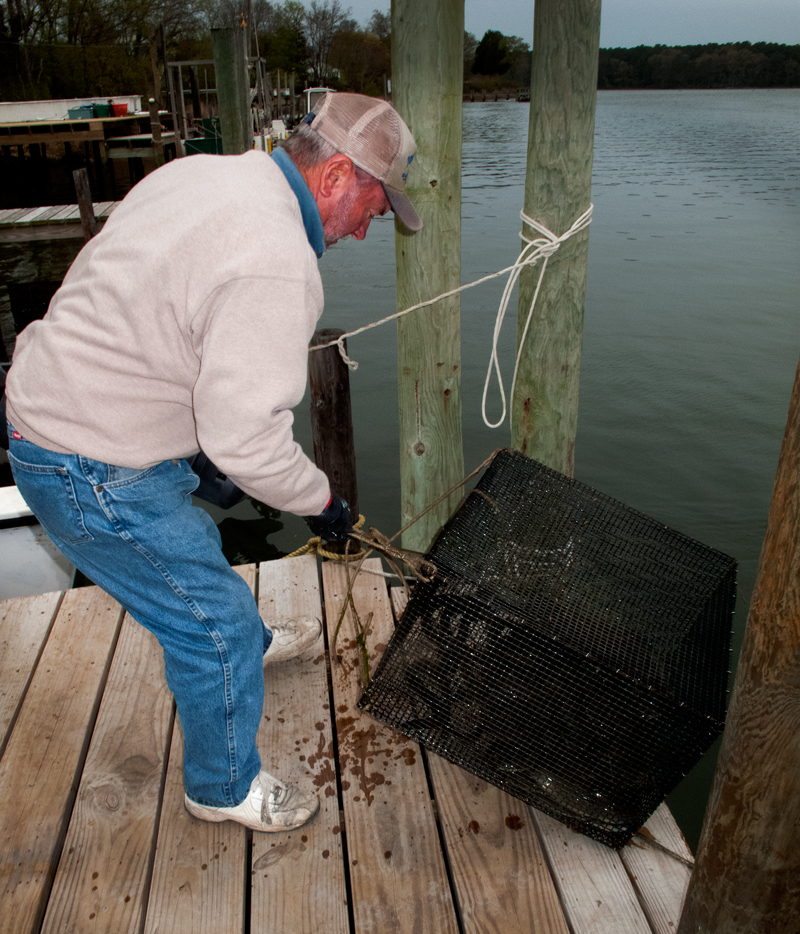
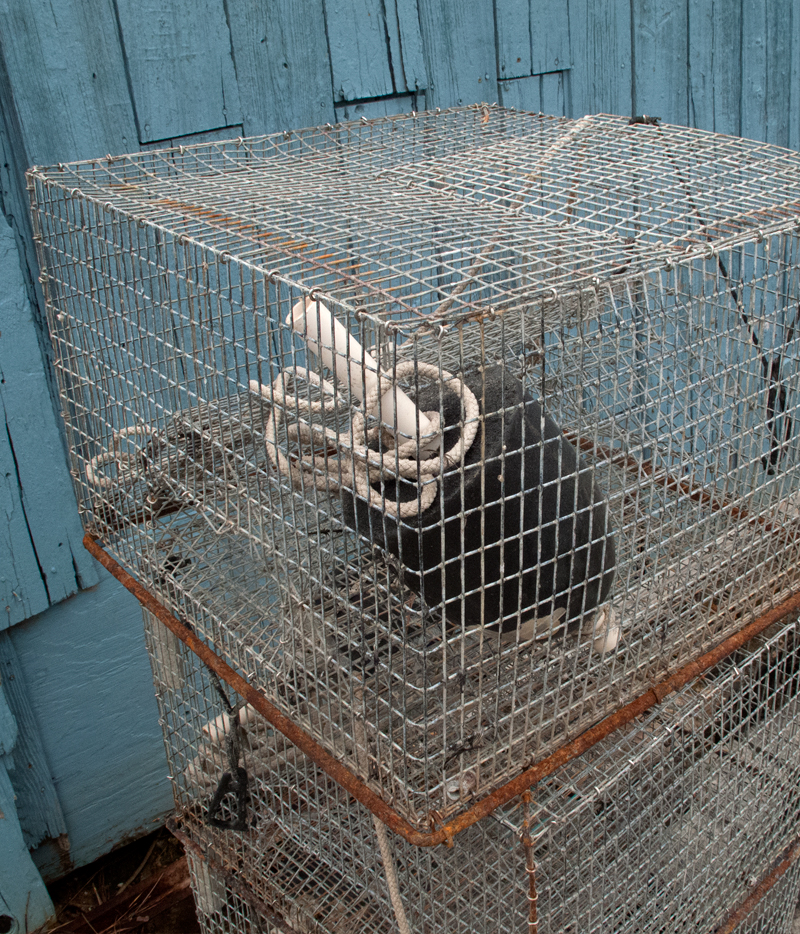
Step one: take the crabs and crush them, including their claws. This is an awful way to butcher a creature, but with a twelve-pound sledge dropped from a height of nine inches it’s quick. The crabs translated into another noun—bait—found their way into a bucket, and the bucket found its way into my canoe. Step two: paddling against a cold front under a sky bruised black and blue, I made my way to the first pot, retrieved and baited it and threw it back over. H. M. was particular in his instructions that you have to move your pots, because eels won’t be caught in the same place twice. Taking this to heart (even though I had yet to catch anything in this location), I moved my pot fifty yards down the creek. Working against the wind scudding across the black-green water, I made my way to the next pot, hauled it up, and proceeded to bait and move it to another location. The last pot was a different model. It had the common two-room arrangement of parlor (the entry chamber) and kitchen (the bait compartment), but was elongated and fashioned from vinyl-coated wire, unlike the two from Eddie that were made of rat wire and boxier in shape. This last pot, on loan from Tom Gallivan, my oyster-growing mentor on nearby Nassawadox Creek, I reserved for new territory—a deep hole around the point of a marsh grass tump where the tide flooded into the creek. Step three: time to wait.
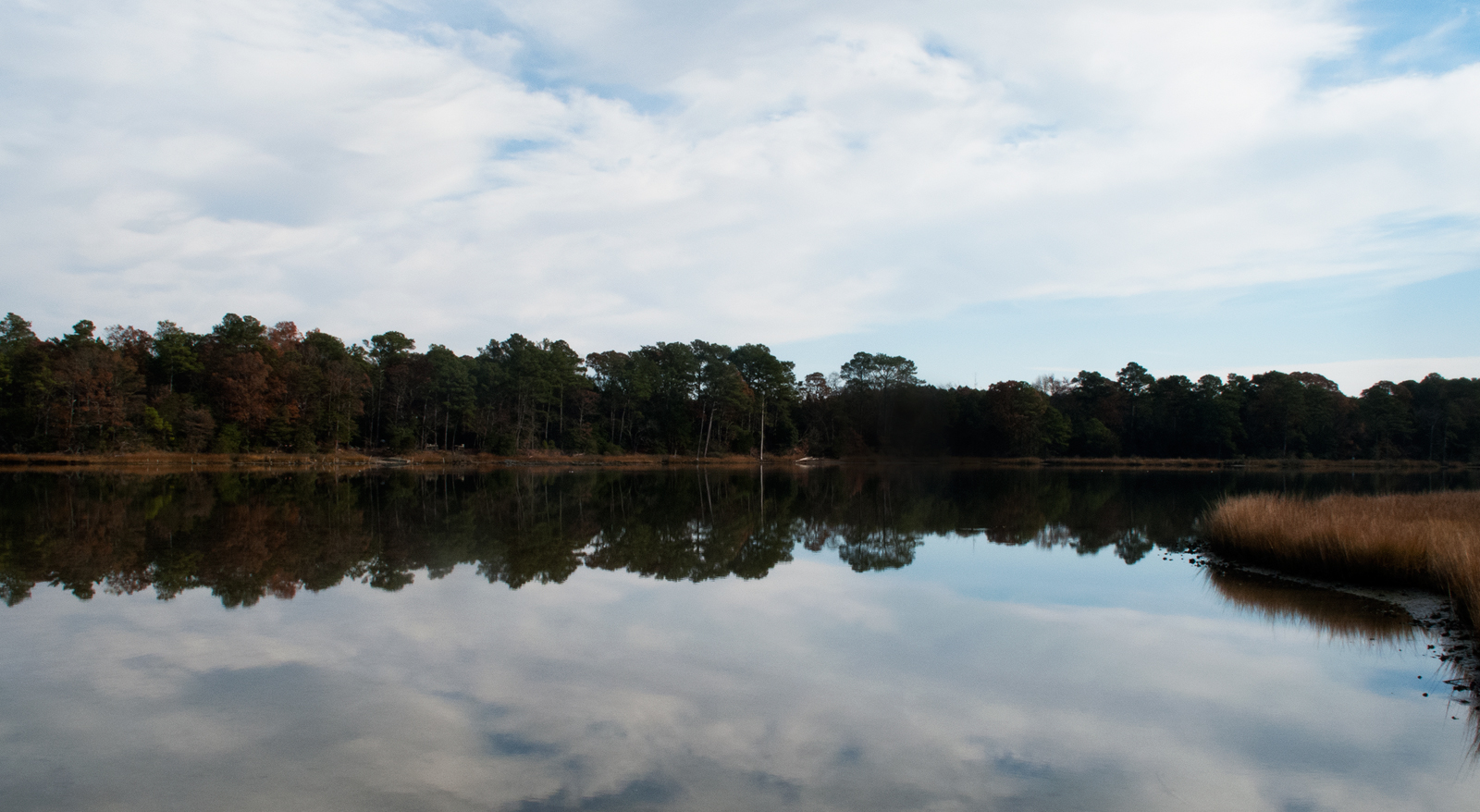
Pity stayed my hand. ‘It’s a pity they aren’t bigger and fatter,’ I thought.
High tide arrived around midnight with a quarter moon. The cold front and accompanying rain had chilled the water, drawing the eels into the creek, or so I imagined. The next afternoon I headed out with the tide and pulled the first pot. Coming up, its weight didn’t feel like much, but when the pot broke surface it was filled with squirming eels. On to pot number two! This was going to be just like the first catch, I was absolutely certain. Wrong! No eels, no nothing. At pot three, I reached over, hooked the cork and line, and pulled the trap from the bottom. There were eight eels, but then the lid popped open and there were four fugitives squirming toward a better tomorrow. Unfortunately for them, they were making an escape around my feet, but I admired the effort and resolved to set them free. Besides, they were too small for the table. Pity stayed my hand. “It’s a pity they aren’t bigger and fatter,” I thought.
Back to the dock. I dropped the cages into the water for storage until I could process the eels for the smoker.
Part II
There’s nothing I look forward to with as little enthusiasm as the brutality of cleaning an eel. Even bottom-feeding jumping mullet, known locally as fatbacks, with their seemingly unending entrails, fall short by comparison. Just killing an eel is difficult enough. Some folks kill eels by rolling them in salt or ashes, a process that kills the animal slowly through suffocation but has the advantage of cleansing away the slime that makes an eel, well, as slippery as an eel. I prefer to put them to death by covering them with ice and letting them slip into a wintery coma. Then, a quick smack to the head, and they’re done. It isn’t pretty, but it’s better than the other options—except setting the eels free, which, when it comes to smoked eel for wintertime, is not an option but a form of gustatory denial bordering on madness. Far better to dispatch the eel with respect than to pine despairingly for the succulent treat on a shudderingly cold January evening. Getting the eels on ice, though, is not the first step. When the cages are lifted onto the dock, the first task is to sort the eels, saving the fattest ones for cooking and setting the lesser eels at liberty (or what I imagine as a kind parole). Given the general lack of purchase an eel affords, this is a struggle where the eels to be set free continuously wrest themselves from the grasp of my knobbly-fingered oystering gloves, slithering deeper into a moving knot in the sorting bucket and creating chaos where only antic confusion previously reigned. Finally, the four largest eels discover themselves in the cooler and the smaller eels are returned to the creek to bulk up for next winter. Thus, eeling standards are observed.
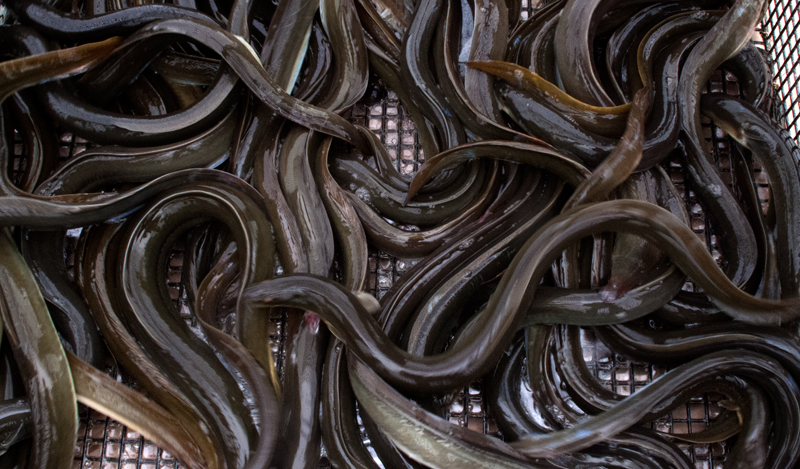
Cleaning an eel is a thoughtful process. Laid out on the skinning board (a plank with a nail at one end pounded halfway), the eel is girdled just behind the fins at the back of its head. The incision requires a sharp knife and a careful hand so as not to cut deeper than the skin. The cut completed and the eel garroted to the nail, skinning pliers peel the skin from the body in a single sweeping motion. A second stroke of the knife opens the abdomen exposing the eel’s internal mechanisms. The neatly ordered viscera invite reflection on the marvel of the eel—and then they are removed and set aside. Its silvery pink and gray flesh exposed, guts excised, body washed with fresh water and cut into four-inch lengths, the butchered eel is laid in brine and left to soak overnight. The head, skin, and internal workings are gathered along with the remains of the other eels and carried to the water. Gulls see me coming and know somehow that bad news for eels translates into glad tidings for them. Piece by piece I toss the remains into the ebbing water where laughing gulls, raucous in their moment of jubilation, and sullen, bullying herring gulls swoop and grab. A herring gull swallows a head in its entirety; another bird sucks down an eel skin as if it were a linguini strand. In minutes the fluttering, bickering crowd consumes it all—there is no waste in nature.
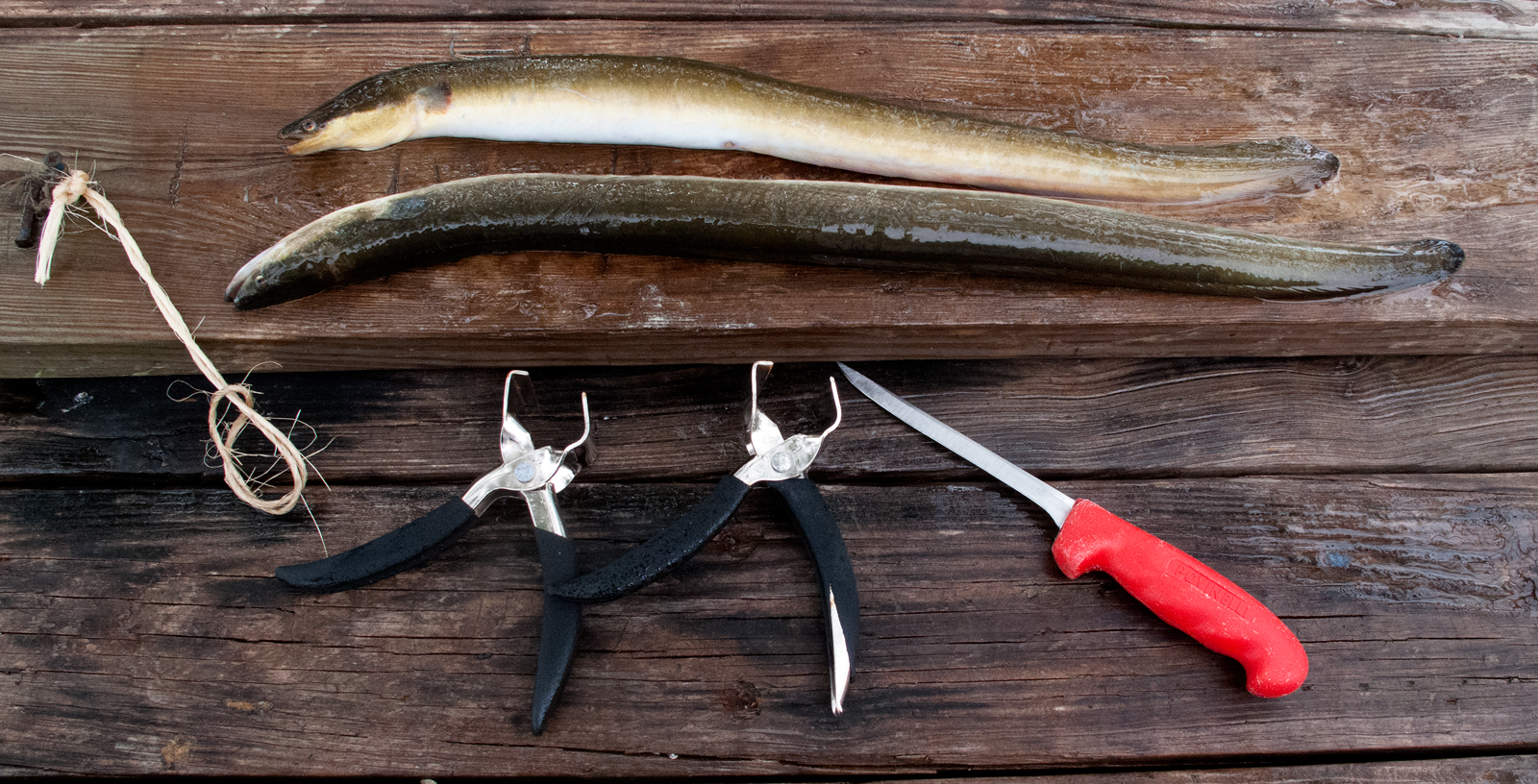
Cleaning an eel is a thoughtful process.
The dressed eels soak in brine overnight. That afternoon, between intermittent rain showers, I fire up the ancient smoker. When it comes to grilling and smoking, I remain old school, favoring charcoal over gas. Chunks of wild cherry gleaned from trees blown down in not-infrequent hurricanes, gales, and northeasters float in a bucket of water. The eels, now ready for the smoker, are lifted from their brine, dried, rolled first in olive oil and then chopped parsley snipped from the kitchen garden and black pepper from the store (we can’t grow everything here although we might try). The seasoned eels are placed on the rack so that they do not touch and the lid to the smoker set in place. I feed the wet cherry blocks on top of the coals and shut the little door. Smoke pours from around the smoker’s domed lid. When it comes to cooking eels, smoking is an easy task—it’s just getting to this stage that’s daunting. Sitting around for fifty minutes while the eels absorb the flavors of smoke and seasoning and drip their rendered fat onto the coals is work I can do, usually with the aid of a glass of something in hand. In an hour the eels are on the plate and the plate is on the table. I’ve also set aside enough to pack in jars with olive oil, black pepper, and rosemary for canning. The outer layer of the eels is brown and crunchy; the inner flesh, smoke tinged a delicate reddish-pink, glistens. The best part, though, is that the eel tastes so good—smoke, salt, pepper, and sea. When I try to describe the rich dark flavors of the firm yet creamy meat, words fail me. As our neighbors remark, “This tastes like more.” I think this eel tastes exactly like winter holidays and the advent of the sleeping season. When January freezes the creek and I trudge my way to our oyster ground, pushing broken ice out of the way, I imagine the eels that sleep cocooned deep in the mud in the dark holes at the bottom. I doubt that eels dream of me the way I dream of them.
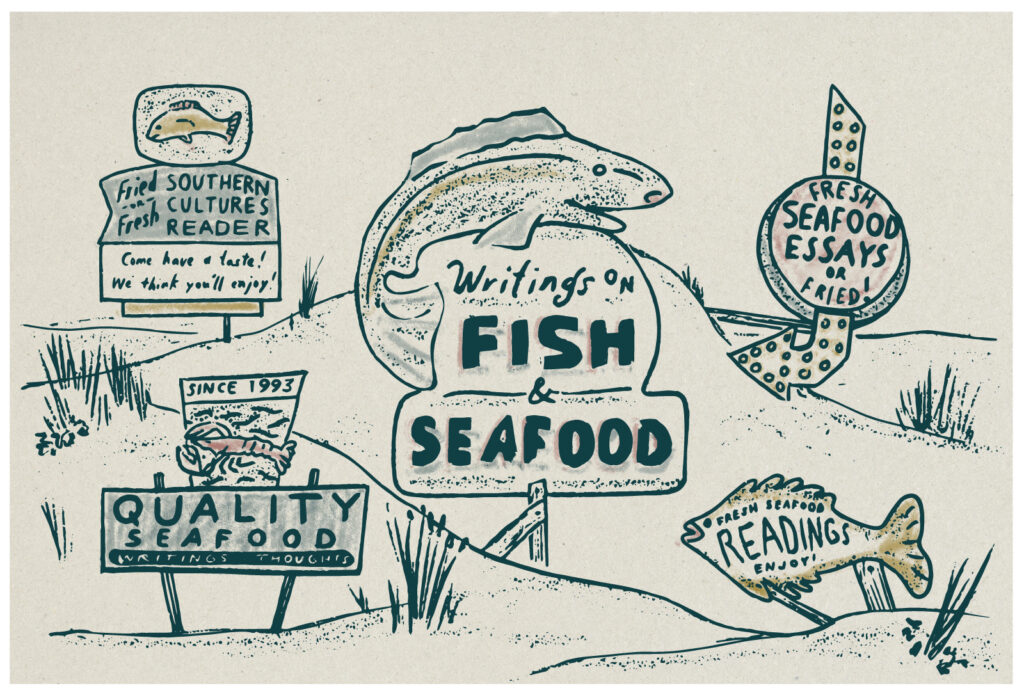
Fresh or Fried: A Southern Cultures Seafood Reader
Twelve fish(ish) tales from the archives (with accompaniments). Read the whole platter here.
Bernard L. Herman is the George B. Tindall Distinguished Professor of American Studies and Folklore at the University of North Carolina at Chapel Hill. His books include Thorton Dial: Thoughts on Paper (2011), Town House: Architecture and Material Life in the Early American City, 1780–1830 (2005), and The Stolen House (1992). He has published essays, lectured, and offered courses on visual and material culture, architectural history, self-taught and vernacular art, foodways, culture-based economic development, and seventeenth- and eighteenth-century material life.

